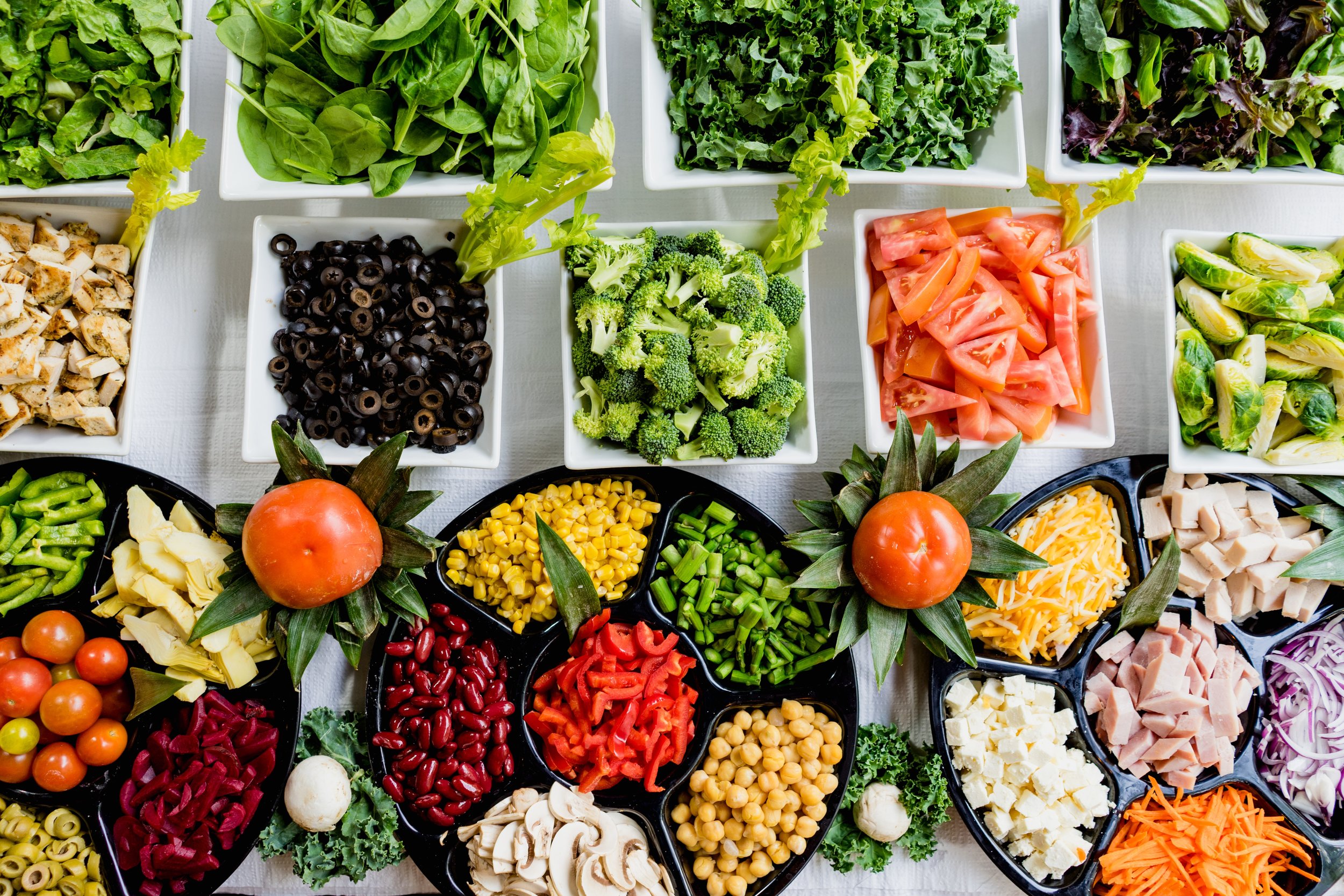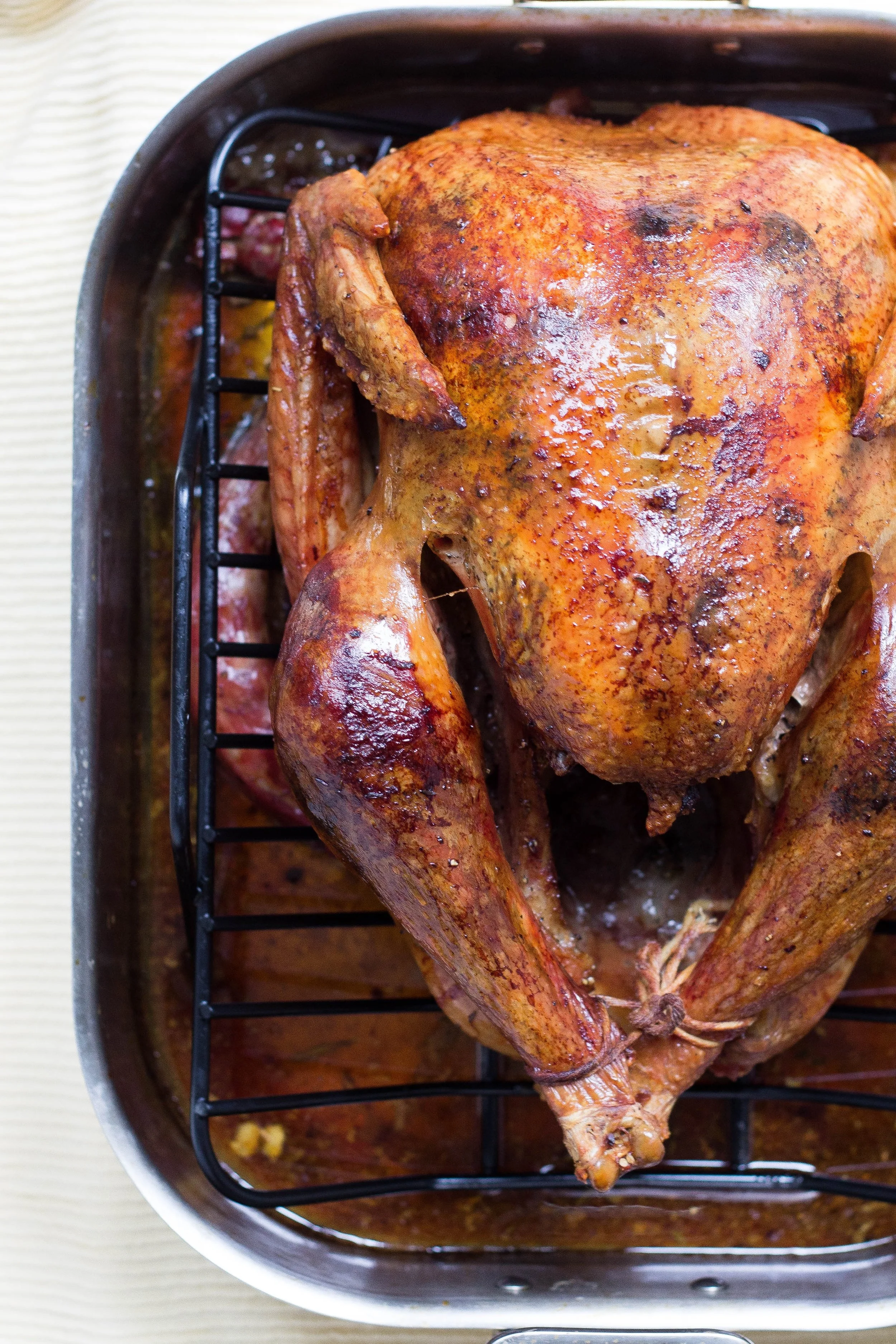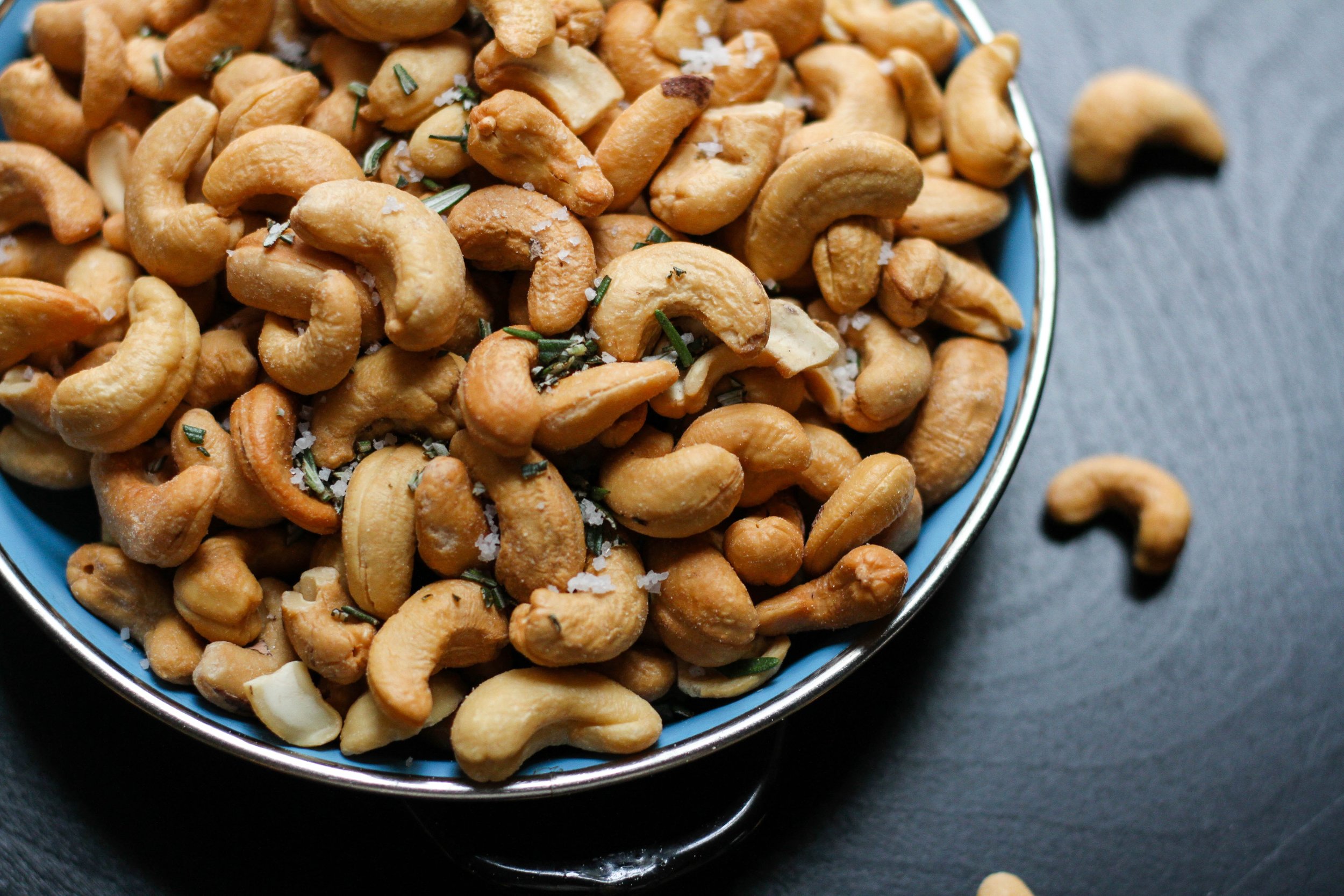What Are Macros?
You’ve probably heard the word “Macros” (short for Macronutrients) when the topic of nutrition or diets come up. Some commonly used instances are:
“Tracking Macros”
“Hitting my Target Macros”
“Does this Fit my Macros?”
“What are the Macros for [insert food/meal]?”
“Macro-Friendly Recipes”
“Eating this will put me OVER my Macros for today”
The word is thrown around so much now that it would nice to know what it actually means.
What exactly ARE Macros?
How do they relate to dieting/nutrition?
Should I track Macros? If so, HOW?🤔
The Purpose of THIS article is to go over:
WHAT Macros Are
How they relate to Energy and Weight Loss
What Tracking Macros Means
Types of Macros
In future pieces, I will talk about:
The BENEFITS of Tracking Macros
HOW to track Macros
HOW to build Meals based on YOUR Macros
What Are Macros?
First off, the word “Macros” is just an abbreviation for the term Macronutrients.
“Macro” is associated with something LARGER
“Micro” is associated with something SMALLER
Therefore, macronutrients are the things that we as humans eat in LARGE quantities in our diet. This includes:
Photo by Alison Marras on Unsplash
Carbohydrates
Proteins
Lipids (to be referred to as Fats)
Water
Vitamins/Minerals.
We know that:
Food has calories.
ALL food we consume is made out of these macronutrients. Even my favorite food, pancakes 🥞
Therefore, calories come from the macronutrients in food
“Tracking Macros” is essentially a system in which dieters use to track their food intake and therefore, calorie intake as well.
The Macros for Breyer’s Butterscotch Ice Cream
Every food we eat has a macronutrient “composition” or “ratio” that details the breakdown of how much of each individual macronutrient is in a particular food.
These can often be found on food labels (see picture->)
Essentially, A FOOD has a specific amount (typically weighed in grams) of:
Carbohydrates 🍞
Protein🍖
Fats🥑
Water
Vitamins/Minerals
And nothing else.
Macros and Calories
The first 3..
Carbs
Proteins
Fats
…are the ones we care about here.
This is because they equate directly to ENERGY and a caloric value, while the Water, Vitamins and Minerals do NOT.
For a refresher, a Calorie is the amount of ENERGY needed to raise the temperature of 1 kg of water by 1 degree C.
I’d say to this day, most people generally know that “Calories In/Calories Out” dictates the direction of your body weight over time.
Most people know that low calorie foods are what you should eat when you diet.
If you overeat calories over time, you GAIN weight.
If you undereat, you LOSE weight.
an overlooked concept
Though some people, rightfully so, question an often overlooked aspect of this whole premise:
How exactly does Food (something that is a MASS) end up being equated to something with ENERGY? Then how does this ENERGY dictate the change in MASS that you weigh over time? Hmmm….🤔
In the next section, I’ll give a simplified summary of how changes in Energy dictate weight gain and weight loss.
The actual deep dive of the biology, chemistry and physiology is unnecessarily complicated for our purposes, and therefore, I will only be skimming the surface. Some deeper dives are probably needed into all the physiological processes behind how things are done.
If you trust me, don’t feel like reading 📖or are uninterested, you can probably skip ⏩ahead to SECTION 3
2. tHE sCIENCE BEHIND WEIGHT LOSS
We first know that Humans are made of:
MUSCLE💪
FAT
BONE💀
ORGANS 🧠
SKIN🤚
WATER 💧
For simplicity sake, we can assume that Bone💀 and Organ🧠 Mass doesn’t significantly change over time. While water mass changes, it is transient and is dependent on a variety of factors.
So the two that dictate body composition changes are:
MUSCLE Mass
FAT Mass
What happens when you eat food?
You eat food 🍱(comprised as macros) and that food is broken down into smaller “building blocks”.
FATS 🥑 ➡ free fatty acids (FFA)
CARBS 🍞 ➡ simple sugars/Glucose
PROTEINS 🍖➡ amino acids (AA)
1) Some of these building blocks will be digested and transported across your intestinal lining, while some won’t be absorbed and will be excreted out your body as poop💩.
We care about the stuff that is transported across the lining of your intestine because it contributes to calories.
2) Now each of these building blocks can be converted to the other based on the needs/demands of the body. The biology behind these mechanisms is a little much, and for our sake, not as important. The important aspect is the end result of these conversions. Also, Ketones can also be made for energy and I touch on that a little bit more in our article on Ketogenic Diets (click HERE to read).
3) Now our 3 END products (based on needs) are:
AA can be stored as new muscle mass
Glucose can be stored as glycogen (liver and skeletal muscle)
FFA can be stored in your muscle and fat cells
Now this is NOT saying that if you don’t eat fat, you can’t store fat. For example, if you overeat on carbohydrates your body may create more fatty acids through something called “de novo lipogenesis”. This part is really just emphasizing the END result and storage. Its essentially the concept that when you eat food it CAN be stored.
using food for energy
You can also use food🍱 for ➡ ENERGY💥
“ATP” (Adenosine triphosphate) is what your body ends up using for Energy.
There’s a process called Aerobic cellular respiration where your body creates ATP💥 through the use of oxygen and glucose and ATP (a small amount) to create ATP (in a large amount), water💧 and CO2.
C(6)H(12)O(6) [Glucose] + 6O(2) → 6CO(2) + 6H(2)O + 38 ATP
Without oxygen, our cells can also create energy through a process called “anaerobic respiration” that yields the same bi-products (along with lactic acid), but in lesser quantities.
how food relates to energy
Food(Glucose, protein and Fat) & Oxygen->ATP (Energy) + C02 + H20.
Because of this reaction… specific quantities of carbs🍞, protein🍖 and fat🥑 can create more ATP or less ATP 💥depending on how much you start out with.
But, creating ATP isn’t entirely efficient. 40% reaction will be dissipated as heat🔥.
This is then quantified by the relationship with the dissipation of heat🔥 and therefore, CALORIES.
MASS of food🍱=Quanitity of ATP💥Energy=dissipation of Heat🔥Calories
For 1 gram of Carbohydrates your body can make enough ATP that couples with the release of 4 calories of measured heat.
Protein is the same as Carbs.
For 1 gram of Fats, your body can make slightly more ATP (because of the bonds in fatty acids) and subsequently is equal to 9 calories of measured heat.
FOR EXAMPLE:
If you’ve ever wondered where the “calorie” amount on foods are calculated from, this is it chief.
Breyer’s Butterscotch Ice Cream has:
3.5 grams of Fat🥑 x 9 = 40.5 calories from Fat
19 grams of Carbs🍞 x 4= 76 calories from Carbs
1 gram of Protein🍖 x 4= 4 calories from Protein
Total Calories = 40.5 + 76 + 4 = 120.5 CALORIES
Weight gain or loss depends on whether or not the energy you EXPEND each day outweighs the amount of energy you CONSUME😛 through food.
If you are expending more energy than you consume through calories, you will need to dip into your STORAGES to get ATP to provide you energy
Ok cool, that makes sense. But where does the weight go when you lose weight? Remember the reaction used to create ATP:
C(6)H(12)O(6) [Glucose] + 6O(2) → 6CO(2) + 6H(2)O + 38 ATP
You have two MASS related byproducts:
C0(2) and WATER💧.
When you are in a calorie deficit, the MASS lost is from breathing (CO2 exhalation) and excretion of Water.
In terms of what is LOST (Fat, muscle, lean body mass) depends on WHERE your body dips into your storages to get its energy!
3. WHAT DOES IT MEAN TO TRACK MACROS?
Now that we understand how MASS equates to ENERGY, it is easier to see why it may be beneficial to have a SYSTEM or TOOL in place to track our energy.
Tracking Macros is simply tracking the quantity of the macronutrients that we eat each day. Since each Macronutrient amount equates to a specific caloric amount, this means that by tracking macros you are ALSO tracking your total calories for the day.
Why not just track calories?
While tracking Macros gives you calories it ALSO paints a picture of the macronutrient breakdown of those calories. Therefore, the tool is essentially tracking:
How many CARBS you eat
How much FAT you eat
How much PROTEIN you eat
IIFYM
Also, you may have heard the phrase “if it fits your macros” (IIFYM).
The logic behind this principle centers around the fact that calories are the PRIMARY dictator of body composition changes over the long term. Therefore, the first part of successful dieting is controlling your calories. In theory, you could eat “junk” food every day, but as long as it “fits” within your prescribed macros for the day, you will still lose weight.
Granted, there is another side to the IIFYM coin where people abuse the rule. People will try and fit in every delicious tasting food under the sun☀. After enough days of unnecessary hunger😫, people will realize that food composition still is a good variable that controls HOW EASY it is to fall within your targets.
How will your body react to eating 300 calories worth of a donut vs 300 calories of chicken and broccoli?
If it fits your macros, therefore, comes down to a game of TRADEOFFS. With the overarching principle of calories in place, it then is up to the person dieting to select foods that give them the best bang for their buck in terms of:
Calories
Hunger
Taste
Vitamins/Minerals/Health Benefits
Fiber
how i do things AS A COACH
I prescribe my clients macros and give them a food list of recommended foods that I find work well for their diet. But at the end of the day, I tell them they have ZERO 0️⃣ restrictions on food.
If they want to fit in treats 🍪🎂🍦every now and then it is completely fine.
This is especially the case if they have already checked their boxes in terms of other important principles 🥗🍓🍳for a successful diet plan.
But, if they are struggling with hunger it tends to come from food selection.
I also give them FLEXIBLE ranges for Macros
If they are struggling with hitting their macros, I will also take a look at what foods they are logging 📝and give them practical recommendations of what to switch in.
Unfortunately, I won’t give guidance in this article about how to determine HOW MUCH of each Macro YOU should eat😕. This topic is VERY comprehensive and has a lot of nuances that need to be detailed in its own article/guide. I eventually want to write about this and I would feel guilty giving half-assed general advice on the subject.
In theory, you or a coach will assign you a number or range of numbers of each macro to hit on a given timeline. Then it's YOUR job to eat foods that best fall within that range of your prescribed macros. This is what is usually meant by “hitting my target macros”.
When people say they are “over” or “under” their macros it means they have fallen outside their prescribed range.
Looking at a food and asking “does this fit my macros?” is the person evaluating whether or not the calorie and macro amount TRADEOFF of that food is worth eating vs something of “better” macros.
The Macros to foods are on food labels or are easily available online (more on this in the HOW to track Macros article).
4. TYPES OF MACROS
A note before going further. When I say something like “1 gram of Carbohydrate has 4 calories”. This does NOT mean that “Food that I consider a carbohydrate has 4 calories for each gram of weight that it is.” A Banana may weigh IN TOTAL 100 grams. But of those 100 grams, it only has around 25 grams of carbohydrates. Therefore the calories that come from carbs in this case is: 25g of Carb x 4 cal/gram = 100 calories.
Carbohydrates:
1 gram of Carbohydrates=4 calories.
Carbohydrates are known as “saccharides” and consist of sugars, starches and cellulose.
Photo by Emiliano Vittoriosi on Unsplash
Starches can consist of things like pasta and cereal.
“Sugars” often is usually coined with a carbohydrate that is sweeter in taste, but can differ as to what kind of carbohydrate it actually is.
Sugars can be Monosaccharides (such as glucose and fructose), Disaccharides (such as lactose and sucrose).
Purpose:
Carbohydrates are a preferred source of fuel for your brain🧠 as well as your muscles 💪when working out.
When broken down into “monosaccharides”, carbohydrates are either stored as glycogen in the liver and muscle cells, used for energy or converted to and stored as fat.
Fructose (usually found in fruit) is often stored in the liver.
Glycogen storages in your muscles play an important role in maintaining adequate training intensity when working out.
The Glycemic Index (GI) is something often referenced when talking about types of carbohydrates. When calories are controlled, the GI of a food source has no direct effect on fat loss [1]. In fact the overall, GI response to carbohydrates is dampened when eating it with other foods (which is normally what we do).
If anything, food selection based on GI can be useful when structuring what foods to eat in proximity to your workout. High GI foods such as Cereal or white breads replenish glycogen levels quicker than fruits or whole grains.
Carbohydrates can also provide a wide spectrum of essential Vitamins, Minerals, and Fiber that is also important for you diet. Check out the nutrient profile for a cup of spinach, for example:
Some foods primarily consisting of Carbohydrates include:
All Vegetables🥗, Most Fruits 🍓(Avocado is a fruit, but is more of a fat source), sweet potatoes (my personal favorite dieting food), and pancakes🥞
Fiber
The first misconception about Fiber revolves around the caloric value of it. Fiber, in fact, does contain about 2 calories per gram [2].
Soluble fiber dissolves in water to form a thick gel-like substance in the stomach. It is broken down by bacteria in the large intestine and provides some calories.
Insoluble fiber does not dissolve in water and passes through the gastrointestinal tract relatively intact and, therefore, is not a source of calories.
Fiber helps with regulating bowel movements and helps with satiation and digestion. Therefore, it indirectly contributes to the energy balance equation. It also helps with Lowering blood glucose and cholesterol levels. Tracking Fiber can be tricky and I will cover it in a future article in the series. [3][4]
Foods higher in fiber include whole grains, beans, avocados, some fruits & veggies
Alcohol
If interested in reading more about alcohol, we have an ENTIRE article covering how to incorporate it into your diet (CLICK HERE).
Protein
1 gram of Protein=4 calories
Photo by Alison Marras on Unsplash
When broken down, protein and thus amino acids are the building blocks of muscle 💪themselves.
Adequate dietary protein gives your muscles the TOOLS to build more muscle and signal to the body to retain what it has.
While the focus usually centers around burning fat while dieting, maintaining your current levels of muscle mass goes hands in hand with this.
Protein is also very satiating. Higher levels of protein can keep you full for longer throughout the day.
Foods with HIGH PROTEIN content:
Most protein powders, lean meats such as chicken, and egg whites are nearly only composed of protein.
Fats
1 gram of Fat=9 calories
Fats, unlike carbs and protein, have 9 calories per gram.
This is why foods high in fat can often add up pretty quickly in calories.
Not to mention fats also taste really good. That’s why people love adding dressings, cheese, and oils to their food.
Eating dietary fats is essential for health.
Fats make up our cell membranes and also are needed for fat-soluble vitamins such as Vitamin K, A and D.
Fats also are slow to digest and therefore, can blunt the overall GI response to a meal and keep you satiated for longer. Granted, this isn’t saying that by themselves fats will satisfy your hunger and keep you full.
There are also different types of fats:
Saturated Fats are usually found in animal products at room temperature. SFs can raise the levels of total cholesterol and low-density lipoprotein (LDL or "bad") cholesterol in the blood, especially if eaten in a calorie surplus [5]. Examples that contain saturated fats include beef fat, eggs, butter, chips and donuts
Foods higher in Monounsaturated fats include Avocados🥑 and nuts, to name a couple. Polyunsaturated Fats can be found in food such as salmon. Most of your fat consumption should come from monounsaturated and polyunsaturated fats.
Trans Fats have been shown to have detrimental effects on health. Thankfully, it is rare to see processed foods that are still made with trans fats in them.
Other Macronutrients
Now what are some things that we still consume in LARGE quantities, but for our purposes don’t directly have any caloric value to them?
Water can make up a large percentage of a food’s composition. For ex., per 100g of strawberries🍓
90g is from Water
7.7g is from Carbs
0.3g is from Fat
0.7g is from Protein
1.3g is from other Trace substances
As you can see, this is why foods that are high in VOLUME, but low in CALORIES are so beneficial when dieting.
Vitamins such as Vitamin A, B, C, D, E and K are also found in foods and have various health benefits
Minerals such as Potassium, Sodium, Calcium, Iron, Copper
Creatine is natural made in the body and a common sports supplement. Although it usually results in scale weight gain due to water retention, it has no caloric value.
Caffeine also has no caloric value and this is why plain coffee and tea can be good, calorie-free diet foods.
conclusion
Now you understand:
WHAT macros are
HOW they relate to weight loss
What TRACKING them means
TYPES of macros
In the next article, I touch more on point number 3 on tracking Macros. What are some of the benefits of tracking macros? Why are they so valuable to coaches as a tool for their clients? What long term benefits could tracking macros provide?
Part 2:
Sources:
[1] https://www.pritikin.com/your-health/health-benefits/healthy-weight-loss/536-glycemic-index-new-study-finds-popular-weight-loss-tool-worthless.html
[2] https://www.nutritionmyths.com/calories-in-fiber/
[3] https://www.accessdata.fda.gov/scripts/InteractiveNutritionFactsLabel/factsheets/Dietary_Fiber.pdf
[4] https://www.biolayne.com/articles/nutrition/carbohydrates-dietary-fiber-labelled-foods/
[5] https://www.accessdata.fda.gov/scripts/InteractiveNutritionFactsLabel/fat.html
[6] https://nutritiondata.self.com/facts/fruits-and-fruit-juices/2064/2











